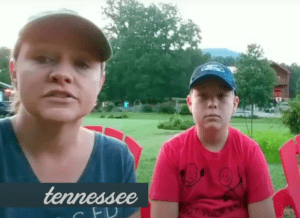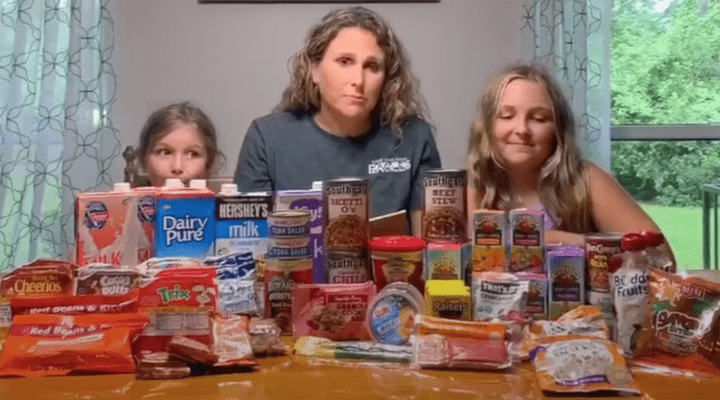If the coronavirus outbreak has proved anything, it’s that hunger and poverty must be addressed through creative and collaborative efforts between government, private-sector and faith-based individuals and organizations, according to Jeremy Everett, executive director of the Baylor University Collaborative on Hunger and Poverty.
“Hunger and poverty are too big for any one organization to address. This is going to take our best and brightest leaders and our most engaged activists and churches and nonprofits to address,” he said.
While that concept isn’t new to COVID-19, Everett and his colleagues witnessed just how powerful the partnership approach can be when the collaborative’s Emergency Meals-To-You program delivered 38.7 million meals to more than 270,000 pandemic-impacted children from March to August 2020.

A Tennessee mother expresses gratitude for the food assistance that has helped her family through the pandemic.
The initiative began as a 2019 effort to deliver food to households in Texas. About 475,000 meals were served to 4,000 students across the state. With the onset of the pandemic, the U.S. Department of Agriculture asked the Baylor Collaborative to broaden the program nationwide. The expanded effort reached 270,483 children in 43 states, Baylor reported.
Participating groups went to great lengths to deliver meals to children whose regular access to school lunches had been interrupted by the pandemic, Everett said.
“Some of the schools were on the Arctic Circle, which were reached by helicopter or by barge,” he said. Native-American children living in the Grand Canyon were reached by mule.
To scale up its effort, the collaborative established or expanded alliances with private companies and public groups. USDA provided $200 million to finance the operation, Everett said. “Our team built a whole new system utilizing existing programs, government assets, the postal service, UPS and others.”
School social workers were instrumental in many locations by tracking down families whose children could qualify for the program.

Jeremy Everett
“That gave rise to everybody utilizing their skills and their gifts and their sectors’ unique abilities in getting meals to these kids,” Everett said. “These are people and companies that had to work together in very difficult circumstances to overcome so many problems.”
The takeaway is that hunger can be lessened with the right funding and teamwork, he added. “Heck, yeah, we can end poverty and hunger if we choose to. We can do things even greater than feeding the 5,000 if we work together.”
But the pandemic has increased the stakes and difficulty of efforts to combat food insecurity, he warned. “Hunger has doubled since the beginning of the pandemic.”
Food insecurity — defined as a disruption of food intake due to financial need — currently stands around 23%, the same level reached before the federal stimulus briefly reduced food insecurity to about 18% nationwide, he said.

An Alabama mother expresses thanks for the extra food that has sustained her family.
Distance learning has exacerbated hunger by depriving children of school lunches and by forcing parents either to miss work or pay for child care.
Low-wage jobs, limited work hours and layoffs also contribute, Everett said. “I think of it as an equation: unemployment plus under-employment plus income volatility plus the pandemic equals hunger.”
A bright spot is that the Christmas season usually inspires higher levels of individual and congregational giving and volunteerism, all of which are needed to address food insecurity.
“All those food drives you see, they are a good thing,” Everett said. “That is tangible food. Anything we can do right now to provide food is important.”
Watch a video about the project here.
Related articles:
I saw two Americas this Thanksgiving | Rob Sellers
COVID-19 creating exponential increase in global poverty
More Americans are hungry, but ‘it doesn’t have to be that way’


